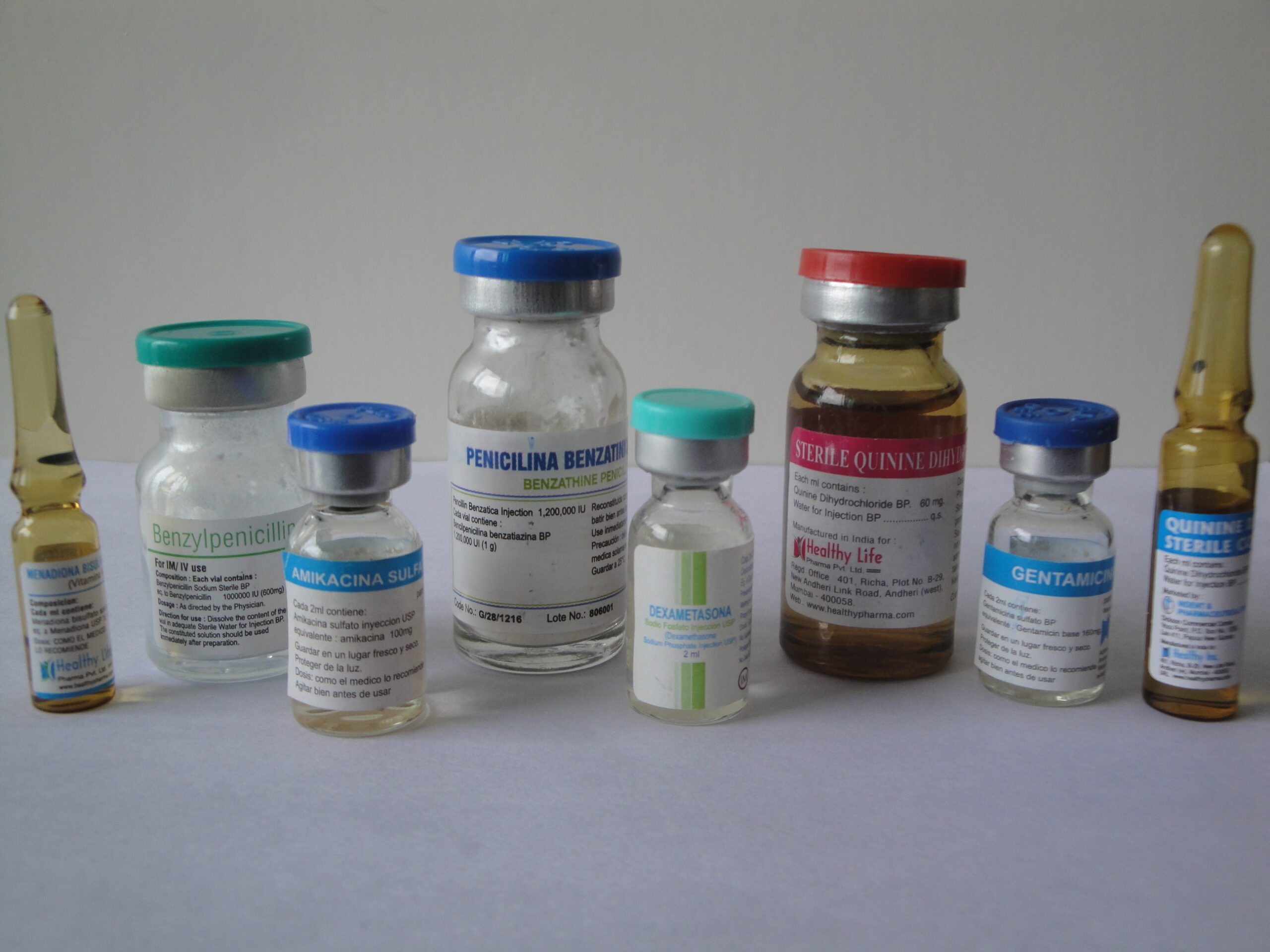Description
Amoxycillin & Cloxacillin veterinary injection
Amoxicillin and cloxacillin are often used in veterinary medicine for the treatment of bacterial infections in animals. When administered via injection, they can provide a rapid and effective way to deliver the medication, especially in cases where oral administration may not be possible or practical. Here are some common usages for these antibiotics in veterinary medicine:
Respiratory Infections: Amoxicillin and cloxacillin injections may be prescribed to treat respiratory infections in animals, such as pneumonia or bronchitis caused by susceptible bacteria.
Skin and Soft Tissue Infections: These antibiotics can be used to treat bacterial skin infections (such as pyoderma) or soft tissue infections (such as abscesses) in animals.
Urinary Tract Infections: Amoxicillin and cloxacillin injections may be indicated for treating urinary tract infections (UTIs) caused by susceptible bacteria in animals.
Mastitis: In dairy cows, mastitis (inflammation of the mammary gland) caused by bacterial infection may be treated with amoxicillin and cloxacillin injections.
Wound Infections: In cases of infected wounds, these antibiotics can help control bacterial growth and aid in wound healing.
Metritis: Amoxicillin and cloxacillin injections may be used in the treatment of metritis (uterine infection) in animals, particularly in dairy cows.
Other Bacterial Infections: These antibiotics may also be used to treat other bacterial infections in animals, as deemed appropriate by a veterinarian.
It’s important to note that the dosage, duration of treatment, and specific indications for using amoxicillin and cloxacillin injections will vary depending on the type and severity of the infection, as well as the species, age, and health status of the animal. Additionally, veterinary oversight is crucial to ensure the appropriate use of antibiotics and to minimize the risk of antimicrobial resistance. Always follow your veterinarian’s instructions and guidance when administering medications to your animals.
The combination of amoxicillin and cloxacillin is often used in veterinary medicine to treat bacterial infections in animals. Here are some common indications for using amoxicillin and cloxacillin in veterinary injections:
Mixed Infections: If a veterinarian suspects that an animal has a bacterial infection caused by more than one type of bacteria, the combination of amoxicillin and cloxacillin may be prescribed to provide a broader spectrum of activity.
Skin and Soft Tissue Infections: These antibiotics may be used to treat infections affecting the skin and soft tissues, such as abscesses, cellulitis, or wound infections.
Respiratory Infections: Amoxicillin and cloxacillin may be employed to treat respiratory infections, including those affecting the lungs or upper respiratory tract.
Urinary Tract Infections: Infections in the urinary tract, such as cystitis or pyelonephritis, may be treated with this combination.
Mastitis: For bacterial infections of the mammary glands in lactating animals, amoxicillin and cloxacillin may be administered.
Bone Infections: In certain cases, these antibiotics may be used to address bone infections or osteomyelitis.
It’s essential to follow the veterinarian’s prescription regarding dosage, frequency, and duration of treatment. Antibiotics should be used judiciously, and the full course of treatment should be completed even if the animal’s symptoms improve before the end of the prescribed period.
Keep in mind that only a licensed veterinarian can diagnose and prescribe medications for your specific animal and its condition. If you have questions about the usage of amoxicillin and cloxacillin for your pet, please consult with a veterinarian for personalized advice and guidance.
The use of amoxicillin and cloxacillin in veterinary medicine is generally for the treatment of bacterial infections in animals. Both antibiotics belong to the penicillin group and are effective against a variety of bacteria. The combination of amoxicillin and cloxacillin may be used when a broader spectrum of coverage is needed, such as in cases where the specific bacteria causing the infection are unknown or when there is a suspicion of a mixed infection.
Here are some common uses of amoxicillin and cloxacillin in veterinary medicine:
Respiratory Infections: These antibiotics may be used to treat bacterial respiratory infections in animals, such as pneumonia or bronchitis.
Skin and Soft Tissue Infections: Amoxicillin and cloxacillin can be employed to treat bacterial infections affecting the skin, wounds, and soft tissues.
Urinary Tract Infections: These antibiotics may be prescribed for bacterial infections of the urinary tract in animals.
Mastitis: Cloxacillin, in particular, is often used to treat mastitis in dairy cows, which is an inflammation of the mammary gland.
Other Bacterial Infections: These antibiotics may be used for various other bacterial infections, including those affecting the gastrointestinal tract.
It’s important to note that the use of antibiotics, including amoxicillin and cloxacillin, should always be done under the guidance and prescription of a veterinarian. The veterinarian will determine the appropriate dosage, duration of treatment, and whether a combination of these antibiotics is necessary based on the specific diagnosis and the individual needs of the animal.
Additionally, injection formulations of these antibiotics are commonly used in veterinary medicine to ensure rapid and effective delivery of the medication. Always follow the veterinarian’s instructions and complete the entire course of antibiotics, even if the animal’s symptoms improve before the treatment is finished.
The combination of amoxicillin and cloxacillin is commonly used in veterinary medicine to treat bacterial infections in animals. The specific usage, dosage, and duration of treatment will depend on the type of infection, the severity of the condition, and the species and health status of the animal. Here are some general guidelines:
Bacterial Infections: Amoxicillin and cloxacillin are effective against a variety of bacteria. They are commonly used to treat infections in different systems of the body, including respiratory, urinary tract, skin, and soft tissue infections.
Mixed Infections: The combination of amoxicillin and cloxacillin may be chosen when there is suspicion of a mixed infection involving different types of bacteria. This allows for a broader spectrum of activity.
Staphylococcal Infections: Cloxacillin is particularly effective against staphylococcal bacteria, so this combination may be chosen when dealing with infections caused by Staphylococcus species.
Dosage and Administration: The dosage and route of administration (such as intramuscular or intravenous injection) will be determined by the veterinarian based on the specific needs of the animal. It’s crucial to follow the veterinarian’s instructions carefully.
Duration of Treatment: The duration of treatment varies depending on the type and severity of the infection. It’s important to complete the entire course of antibiotics, even if the animal’s symptoms improve before the treatment is finished.
Monitoring: Veterinarians may monitor the animal’s response to treatment and may adjust the dosage or switch to a different antibiotic if necessary.
Always consult with a veterinarian before administering any medications to your pet. They will consider the individual circumstances of your animal and prescribe the appropriate antibiotics and dosage. Self-medication or using antibiotics without veterinary guidance can lead to ineffective treatment and the development of antibiotic resistance.




